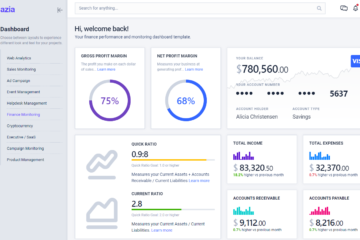iOT is Shaping the Agriculture Industry.
In today’s fast-paced and technology-driven world, the Internet of Things (IoT) has emerged as a transformative force in various industries. One such sector that has witnessed the powerful impact of IoT is agriculture. With IoT revolutionizing the agriculture industry, farmers and businesses are reaping the benefits of smart and connected solutions that have the potential to enhance productivity, efficiency, and sustainability.
Agricultural IoT solutions have revolutionized the way farmers approach their daily operations. These solutions leverage sensors, drones, and other intelligent devices to collect and analyze real-time data. This data can then be used to make informed decisions, optimize resource utilization, and improve crop yields.
One of the key advantages of IoT in agriculture is its ability to provide farmers with unprecedented visibility into their fields. With sensors embedded in the soil, farmers can obtain accurate and up-to-date information about temperature, moisture levels, and nutrient content. By monitoring these critical factors remotely, farmers can make precise decisions regarding irrigation, fertilization, and pest control. This not only maximizes crop growth but also reduces water and chemical usage, resulting in significant cost savings and environmental benefits.
In addition to field monitoring, IoT solutions also enable farmers to automate various processes. For instance, connected devices can control irrigation systems, adjust nutrient levels, and regulate greenhouse conditions. By automating these tasks, farmers can minimize labor requirements, increase operational efficiency, and ultimately, boost profitability. Furthermore, IoT-driven automation ensures consistency and precision, reducing the likelihood of human error and optimizing overall quality.
The IoT revolution is also transforming the agricultural supply chain. With the help of IoT-enabled tracking and tracing systems, farmers and businesses can monitor the movement of goods from farm to table. This not only provides transparency but also helps detect potential spoilage or contamination risks early on, minimizing food waste and ensuring consumer safety. Moreover, IoT-based inventory management systems can streamline the supply chain, enabling businesses to optimize storage capacity, reduce stock-outs, and improve logistical efficiency.
Another vital aspect where IoT is making a significant impact is in livestock management. Through the use of wearable devices and IoT sensors, farmers can monitor the health and behavior of their animals in real-time. This allows for early disease detection, precise feeding schedules, and personalized care, resulting in healthier livestock and increased yields. By providing farmers with actionable insights, IoT solutions are empowering them to adopt a proactive approach to animal husbandry, ensuring the well-being of their herds and improving overall farm productivity.
The benefits of IoT in agriculture extend beyond increased productivity and profitability. By optimizing resource utilization and reducing chemical inputs, IoT solutions contribute to sustainable farming practices. The ability to monitor environmental parameters facilitates precision agriculture, enabling farmers to minimize their ecological footprint and conserve precious resources. Furthermore, IoT-based predictive analytics can help farmers plan for adverse weather conditions, mitigate risks, and adapt to changing climate patterns, making agriculture more resilient and sustainable in the face of growing environmental challenges. In conclusion, the IoT revolution in the agriculture industry represents a transformative force that is driving innovation and reshaping farming practices. With its ability to collect, analyze, and utilize real-time data, IoT is empowering farmers to make data-driven decisions, optimize resource utilization, and embrace sustainable practices. By leveraging smart and connected solutions, the agriculture industry is poised to witness significant improvements in productivity, efficiency, and environmental sustainability. As technology continues to evolve, the possibilities in agriculture IoT are endless, promising a bright future for farmers and businesses alike.


0 Comments